An island of hills on a prairie sea
Cypress Hills Interprovincial Park
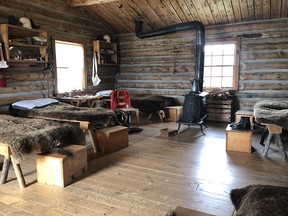
Reviews and recommendations are unbiased and products are independently selected. Postmedia may earn an affiliate commission from purchases made through links on this page.
Article content
There was no mistaking it: the sound of a coyote howling from across the lake, that yippy-barking piercing the night. I sat in the darkness, soaking in the wild sounds mixed with our campfire’s hissing and popping.
It was the second night we’d heard the “brush wolves” serenading the prairie skies. My wife and I had been lucky enough to see them a few times while sipping our morning coffee on the porch of our cabin at Cypress Hills Interprovincial Park.
Coyotes are half of a predator-prey duo that ranges the southern prairies. What’s the other half? The fastest land creature in North America: pronghorn antelopes.
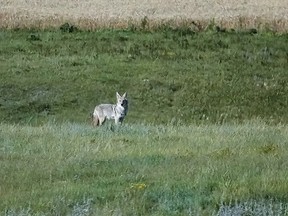
They aren’t actually “antelopes;” their closest relatives are the giraffes and okapi of Africa. Fast, but not evolved for jumping, pronghorns try to scoot under fences that snake across the prairies, and that’s often when coyotes will move in for a meal.
The park, which straddles the border between Alberta and Saskatchewan was Canada’s first interprovincial park, resulting from the Alberta and Saskatchewan governments joining forces to administer the park in 1989. Eleven years later, the Fort Walsh Historic Site was formally included as part of the park.
The Cypress Hills area also provides a chance to see bird species you might not see anywhere else in that part of Alberta, as a result of its geology. It’s almost like an island in the prairie ocean, says Yousif Attia, citizen science coordinator for Birds Canada.
“The area was unaffected by glacial activity, so there’s an elevation rise,” he says. “With that, there’s more precipitation, more vegetation which offers a variety of habitat for bird diversity.”
During an afternoon jaunt along a boardwalk on the park’s largest lake – Elkwater Lake, on the Alberta side – I spotted several different species, including a snipe, a mountain bluebird, a pair of red-necked grebes, and several Caspian terns riding the wind currents above the lake. Swallows darted along the water’s surface, looking for bugs. Several times we saw hawks hovering overhead or sitting on a fencepost, scanning the ground for prey.
Fishing opportunities exist on many of the park’s lakes, and I tried my luck on Spruce Coulee reservoir and Reesor Lake. Both offer fishing from a dock and from boats.
I tried both methods on both lakes … without any luck. When we took a canoe out for a paddle on Reesor Lake, they were jumping all over the place – just not onto my lures.
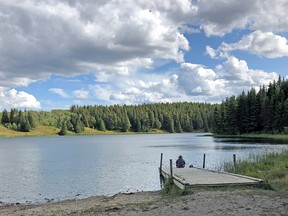
Even the lake’s pelicans were catching fish.
While fishing is one activity that doesn’t always net results, if you’re a history buff, a visit to the Fort Walsh National Historic site should prove to be fruitful.
Renowned Sioux chief Sitting Bull spent time there it 1877 following his tribe’s flight from the aftermath of the Battle of the Little Bighorn in the USA.
Located in the southeast of the park, on the Saskatchewan side, it’s as far away from northwestern Elkwater as you can drive and still be in the park.
Portions of the road are pretty rough just past Reesor Lake on Battle Creek Road, but we made it driving a medium-sized sedan. If there had been rain; I could see the dirt road becoming a tire-sucking quagmire if you didn’t have a four-wheel drive vehicle. The other option is a longer drive out of the park north to the Trans-Canada Highway, east to 21, then south through Maple Creek, Saskatchewan and onto Secondary Road 271. We drove that route on our return to Elkwater, and it did take more time, but that’s when we spotted some pronghorns along the road into the park.
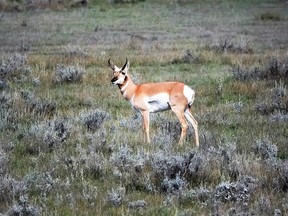
At the fort we took a guided tour through the Northwest Mounted Police post commander’s quarters. I tried to imagine and absorb what Superintendent James Walsh would have felt in the presence of someone like Sitting Bull, the internal conflict he must have experienced trying to balance safety and peace with the Sioux and their desire to stay in Canada against the wishes of an American delegation that visited, trying to convince Sitting Bull to return to the U.S.
Caught in the middle of two powerful factions, Walsh performed that juggling act for five years before being transferred. The Canadian government wished the Sioux to leave Canada and did not feel he was doing everything he could to convince them to go.
“It was a tricky situation,” says Scott Whiting, visitor experience manager for Fort Walsh. “For the First Nations people, the border along the 49th parallel was an entirely arbitrary thing.”
Eventually, after Walsh left, the Sioux departed for points south.
While someone of Sitting Bull’s renown certainly brings attention to the area, Whiting points out that the Cypress Hills were a special place for First Nations people long before the Sioux.
“The hills were a crossroads, a meeting point for indigenous peoples for ages,” he says. “This was a significant place, it had a large human presence, it saw a lot of activity. During the peak years of Fort Walsh, with the indigenous presence in the area, with the trading town that sprang up, it was one of the most densely populated areas in Canada, between Winnipeg and Vancouver.”
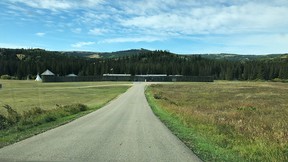
Wandering around the barracks, I got a sense that the constables who called this fort “home” were made of pretty stern stuff. The beds were essentially wooden boards with legs, each with its own buffalo robe. Most people visiting the park these days sleep much more comfortably.
We chose the basic cabins provided by Alberta Parks along Elkwater Lake for what they call “comfort camping.” Each cabin provides bunk beds with mattresses, a heater and a small fridge-freezer unit. While there, we cooked outside on a camp stove.
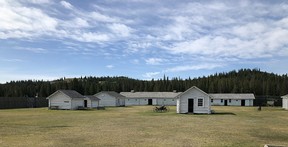
Our last night there, we cooked over the firepit provided by the park service. Because after all, we were camping, right? Nothing really beats hot dogs roasted over an open wood fire as a main course, followed by gooey, sweet, runny smores for dessert.
As the darkness encroached, we could hear the coyotes start to perform their twilight tunes, a canine concert that never gets old.
IF YOU GO:
Camping, Alberta side: There are various levels of camping at the park’s campsites, with both serviced and unserviced campsites. You can also choose “comfort camping” in one of the park’s huts or cabins.
They all provide bunk-style beds with mattresses and can sleep from three to eight people, depending on which building you reserve. Many of them come with power and lighting. A few come with wood stoves, those that do not provide fire pits and picnic tables outside.
Campsites can be booked online at https://reserve.albertaparks.ca or call 1-877-537-2757
Hotels/Lodges: There are three lodges in the park, one the Alberta side, two on the Saskatchewan side, and an Airbnb near Elkwater Lake.
Elkwater Lake Lodge and Resort https://www.elkwaterlakelodge.com 1-888-893-3811
Buffalo Trail Guest House, an Airbnb facility http://buffalotrailguesthouse.ca
Historic Reesor Ranch https://www.reesorranch.com 1-306-662-3498
The Resort at Cypress Hills https://resortatcypresshills.ca 1-306-662-4477
Camping, Saskatchewan side:
Like Alberta, the campsites range from self-sufficient without power to sites with electrical hook-ups. They do have “camp-easy” sites, where a reserved tent is already set up for you, complete with beds, a covered shelter, a picnic table, camp chairs, a camp stove with propane, a fire pit, axe, wash bin and parking for two vehicles.
Book online at https://parks.saskatchewan.ca or call 1-833-775-7275
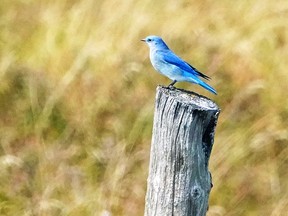
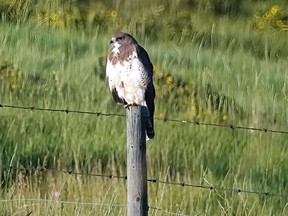
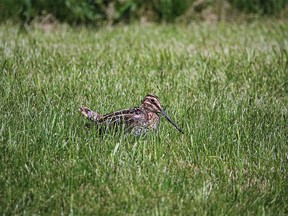
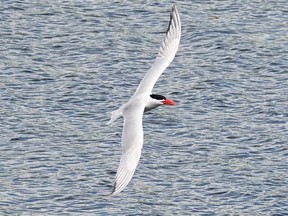

![VANCOUVER, BC - April 3, 2024 - West Broadway looking west from tower that is under construction at Broadway and Granville in Vancouver, BC, April 3, 2024. (Arlen Redekop / Postmedia staff photo) (Story by Dan Fumano) [PNG Merlin Archive]](https://smartcdn.gprod.postmedia.digital/vancouversun/wp-content/uploads/2024/04/png0403-tower-construction-8.jpg?quality=90&strip=all&w=232&sig=vUa6zTiEqOd-vi2lQwJAhw)



Postmedia is committed to maintaining a lively but civil forum for discussion. Please keep comments relevant and respectful. Comments may take up to an hour to appear on the site. You will receive an email if there is a reply to your comment, an update to a thread you follow or if a user you follow comments. Visit our Community Guidelines for more information.